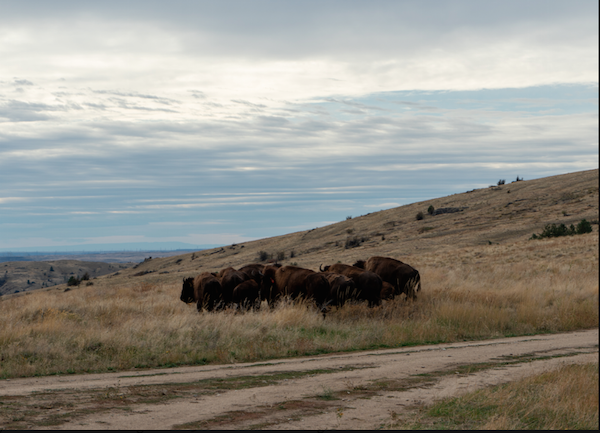
Colville Tribes Release Buffalo On Reservation
Nearly two dozen bison are roaming a reservation in Northcentral Washington after tribal wildlife managers released them “to live in the wild” there today.

The Colville Tribes say another seven animals are expected to be released tomorrow and that all are “pure buffalo,” “vaccinated” and a gift of a nearby tribe that had a surplus. All said and done, there will be 29 cows and one bull.
“Today, qʷisp (buffalo) return to part of their historic range,” said Jarred-Michael Erickson, tribal chair, in a press release carried in the Tribal Tribune. “We are always happy and proud when we can take a step toward restoring our lands to their natural condition. The Colville Tribes wishes to thank the Kalispel Tribe, who gifted us these magnificent animals. We also thank the Biden-Harris administration for their financial support of our ecosystem and the buffalo.”
The animals were released near Buffalo Lake and Keller Ridge, which is not far north of Grand Coulee Dam.
The bison are the latest wildlife let loose by tribal managers on their lands in Washington and follow the release of pronghorn antelope on both the Colville and Yakama Reservations over the past decade or so, some of which have drifted onto private and other ground nearby. The Yakama Nation has hosted a bison herd of its own since at least 1995, the Kalispels since the 1970s.
But what might set the Colville bison release apart is the size of the area the animals are now apparently free to roam. They were released by the tribe on what is described as “range unit 25,” which a management plan lists as 16,610 acres, or just under 26 square miles, a bit less than one third the size of Seattle and a bit smaller than half of Spokane.
“Buffalo are considered a keystone species because their presence has a ripple effect on every other species that lives in the same ecosystem. Their grazing can provide nesting grounds for birds, while their wallows (depressions they create by rolling in the soil) can fill with water, which in turn other species may use for drinking or breeding pools,” said the press release.
